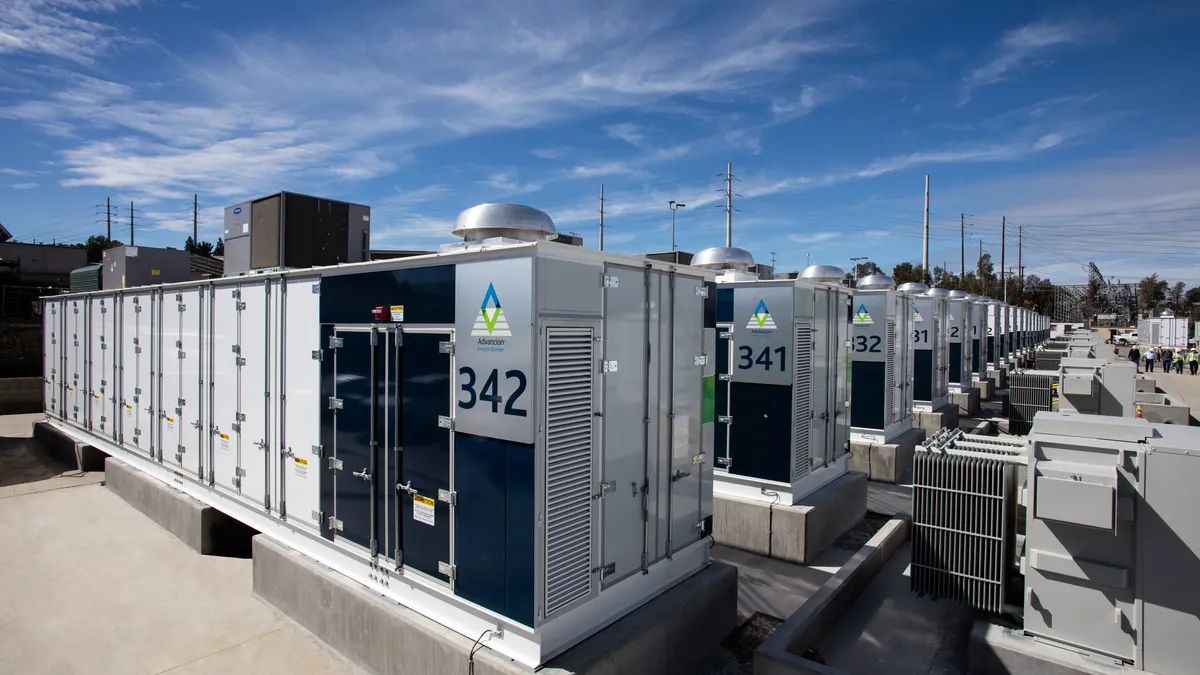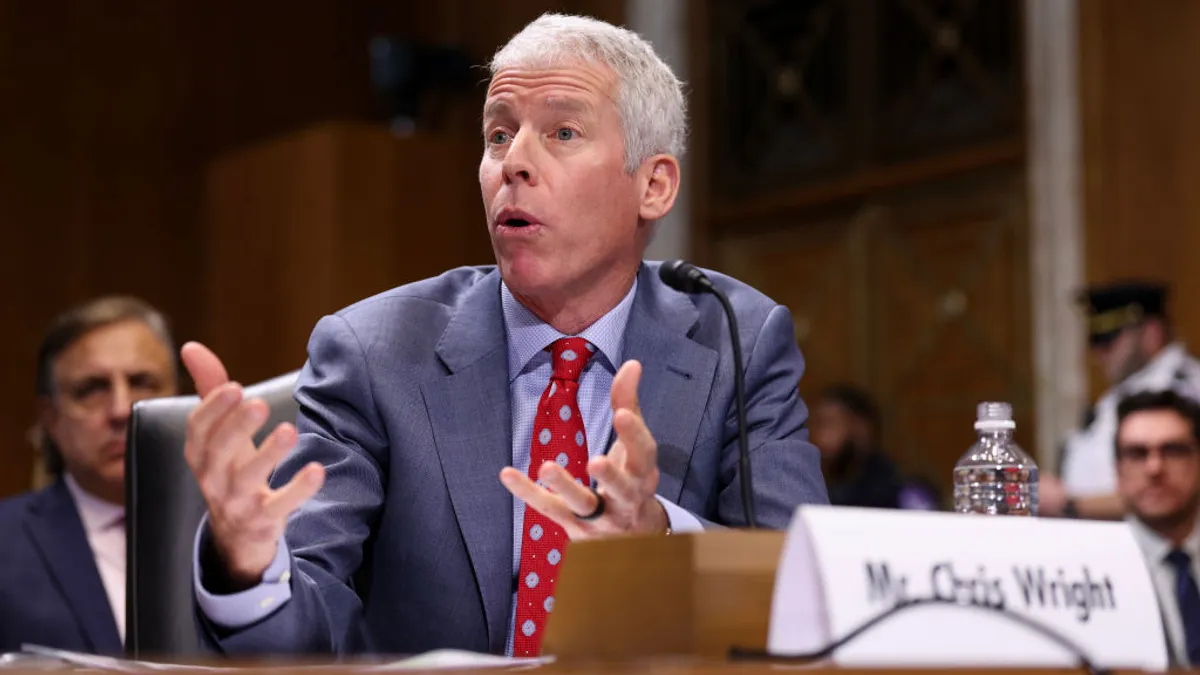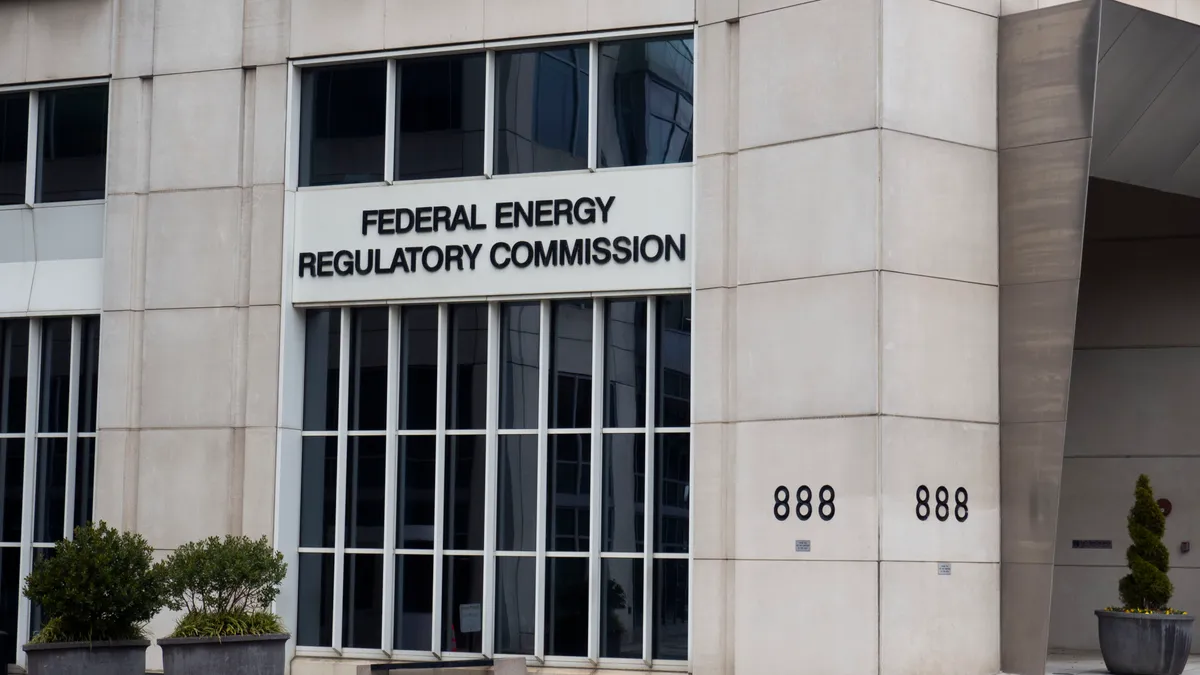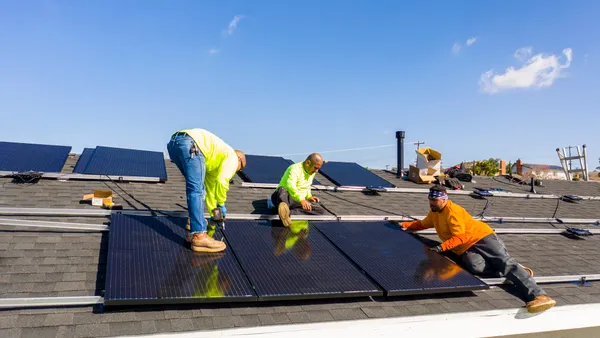Dive Brief:
-
The Energy Storage Association published a report with recommendations on cost effective state policies for energy storage.
-
"State Policies to Fully Charge Advanced Energy Storage: The Menu of Options," says that current market structures and policies lack clear mechanisms to identify and capture the full value of energy storage systems.
- The report says states should focus on value, competition and access in order to achieve the maximum benefit from energy storage.
Dive Insight:
Only a handful of states – California, Oregon and Massachusetts – have energy storage procurement targets. California and Oregon were the first to enact mandates for energy storage. They were followed by Massachusetts, which recently set an “aspirational” 200 MWh storage target. And in June, the New York legislature passed a bill calling for an energy storage target.
But a new report from the ESA put establishing a procurement target at the top of its list of state policies needed to jump start energy storage deployment. A target creates an environment in which storage purveyors can learn by doing. In states like California, this has already resulted in procurements that have exceeded mandated targets, the report says.
Among the other recommendations from the ESA is the creation of time-varying electricity rates that can demonstrate the value of storage to customers while better aligning customer costs with system costs.
The report argues that the benefits of energy storage must be realized through accurate market signals that enable the value of storage to be monetized. This could include solutions such as locational pricing and crafting rates that signal the best time to leverage storage capabilities, the report says. New York's Reforming the Energy Vision is one notable effort tackling these issues, including compensating distributed energy resources according to the value assigned by the location.
As prerequisites for competition, ESA recommends that states include energy storage in its integrated resource planning, distribution system planning, grid resilience and emergency management planning, peak demand reduction and energy efficiency programs. The report also recommends cost-benefit analysis for storage, and potential tax incentives to scale deployment in states.
To encourage access, the report recommends that interconnection rules and interconnection queues should be updated to reflect changes in the energy storage market.
The report also recommends that customers and third parties should be allowed to own and provide storage to utilities as a service. And in restructured states, utilities should be allowed to own and provide storage as a part of their infrastructure. Whether or not utilities should ratebase such technologies is a point of contention, however. About 95% respondents to Utility Dive's annual State of the Electric Survey believe utilities should be able to ratebase behind-the-meter technologies. But independent vendors view that as anti-competitive and fear utilities will use market power and name familiarity to monopolize the market.













